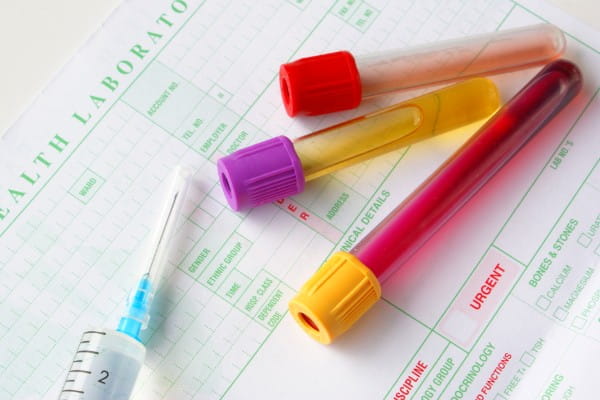A urinalysis is a lab test that is often part of your annual physical with your Riverside Health primary care provider. By looking at levels of protein and certain minerals in your urine, your primary care provider can determine if you may have developed a new health condition, and if your existing health conditions are properly managed. Establishing care with a primary care provider and seeing him or her for your annual wellness visit can help you stay healthier for life.
What urinalysis can reveal about your health
Along with other screening tools like blood tests, urinalysis is an important part of your annual wellness visit. Urinalysis can be used to:
- Check your overall health
- Diagnose a new health condition
- Monitor an existing health condition
“We use urinalysis to diagnose and manage many health conditions, including kidney disease, diabetes and urinary tract infections,” explains Dwight Herbert, M.D., family medicine provider at Riverside. Specialized types of urinalysis – such as a pregnancy test or drug screening – check for specific substances in the urine.
Urinalysis prep instructions
If the only test you are undergoing is a urinalysis, you shouldn’t have to make any special preparations. Urinalysis tests don’t require you to fast (avoid eating or drinking). You should advise your doctor of all medications, supplements and vitamins you take, as these can affect the urinalysis.
What to expect
Your doctor’s office will provide a cup or other container for urine collection. You may need to provide the sample at the office, or you may need to collect the urine sample at home (such as if your doctor needs to check a sample of your urine from the first time you use the bathroom when you wake up in the morning).
Before urinating, use an alcohol wipe to cleanse your urinary opening. For best results, you should try to collect your urine sample in the middle of your urine stream. To do this, start urinating in the toilet and then pass the collection cup underneath your urine stream. Aim to urinate at least 1 or 2 ounces in the cup. Then, finish urinating in the toilet.
Deliver the collection cup to the designated place in the restroom or doctor’s office. If you cannot deliver the cup within one hour of urinating, you should refrigerate the sample.
How lab technicians perform the urinalysis
The lab technician will analyze your urine in three main ways:
- Visual exam. Normal urine should be clear. If your urine is cloudy, you may have an infection or other condition. If your urine has a reddish tint to it, you may have blood in your urine. The lab technician will report these findings to your doctor, who may choose to run more tests.
- Dipstick test. In this test, the lab technician uses a dipstick, which is a plastic stick with strips of chemicals on it, to check your urine for abnormalities. A dipstick test can check your urine for a wide range of substances, including:
- Acidity
- Bilirubin (substance that occurs during breakdown of red blood cells)
- Blood
- Concentration (how many particles are in your urine)
- Ketones (substance that can indicate diabetes)
- Protein
- Signs of infection
- Sugar
- Microscopic exam. During this part of the urinalysis, the lab technician views several drops of your urine under a microscope. If the lab technician notices that any of the following are above normal ranges, your doctor may need to perform further testing:
- Bacteria or yeasts
- Casts (certain proteins that can indicate a kidney disorder)
- Crystals (may indicate kidney stones)
- Red blood cells
- White blood cells
Your primary care provider will receive a detailed report showing the results of your urinalysis. If all aspects of your urinalysis are normal, you may not hear anything from your health provider’s office. If the urinalysis determines that anything about your urine is abnormal, your provider’s office will contact you to discuss these results and may schedule additional testing. “Working together, you and your primary care provider can chart a course to be your healthiest you,” says Dr. Herbert.
Make an appointment
Finding a primary care provider and scheduling your annual physical is a critical step in helping you stay healthy for life. When you come in for your appointment with your primary care doctor, you may undergo urinalysis and other important screening tests.
Schedule an appointment today.



